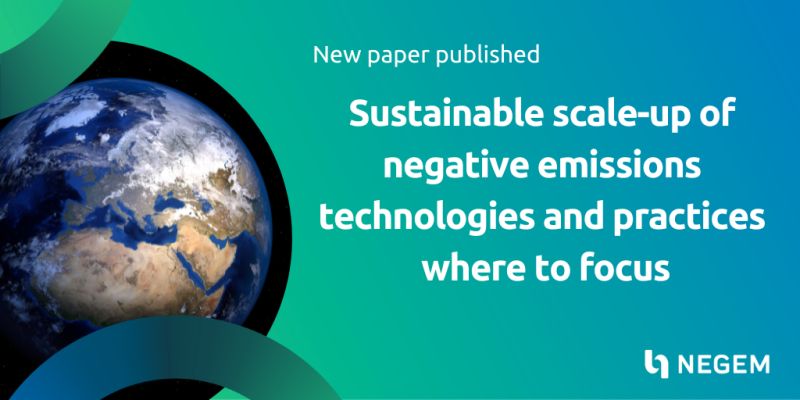Most climate change mitigation scenarios restricting global warming to 1.5 °C rely heavily on negative emissions technologies and practices (NETPs).
This recent research paper by co-authored by NEGEM partners Selene Cobo, Valentina Negri, Antonio Valente, David M Reiner, Lorie Hamelin, Niall Mac Dowell, and Gonzalo Guillén-Gosálbez, assessed the most appealing types of NETPs among 36 configurations considering indicators of their technical maturity, economic feasibility, greenhouse gas removal potential, resource use, and environmental impacts.
Highlights
- Although no single NETP performs better than the others in all the indicators simultaneously, some solutions are deemed as particularly promising: forestation, soil carbon sequestration, enhanced weathering with olivine and three modalities of direct air carbon capture and storage (DACCS).
- While investments in other types of NETPs should not be discouraged, the authors recommend expanding the set of NETPs currently available within Integrated Assessment Models to include these efficient and promising solutions.
- A regionalised portfolio that takes advantage of the complementary strengths of different types of NETPs is the way to go, in order to minimize the potential tradeoffs that could affect NETPs deployment at a scale.
- Devising negative emissions pathways that capitalise on the synergies between NETPs and overcome their individual constraints while minimising overall collateral damage will require rigorous sustainability evaluations based on systematic life cycle assessment studies and multi-criteria decision-support tools.
Access full paper https://lnkd.in/d89wBeRs


